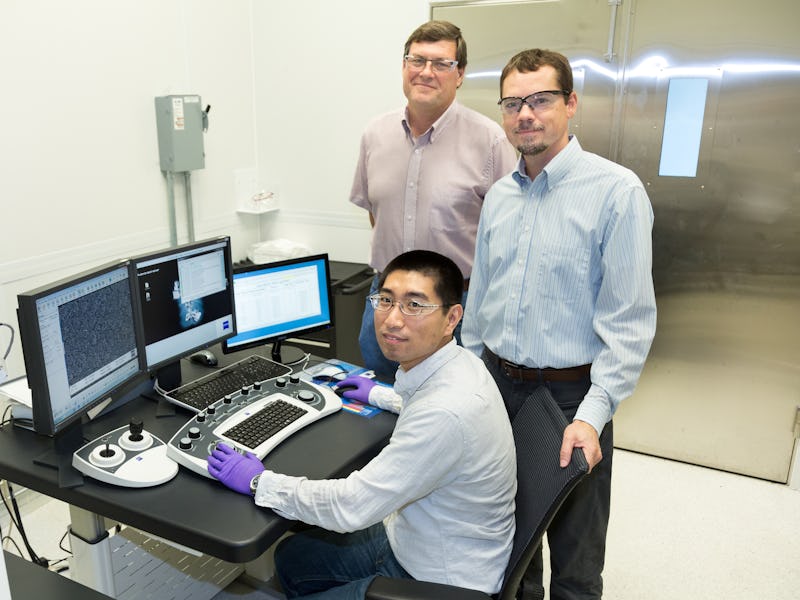Researchers at the U.S. Department of Energy’s Oak Ridge National Laboratory (ORNL) have accidentally discovered a process that can turn carbon dioxide (CO2) directly into ethanol. While the exact process they used is unlikely to be widely adopted, the research might just help the efforts to wean the world off fossil fuels.
The current process uses a mixture of various catalysts — carbon, copper, and nitrogen — with nanotechnology that ensures they produce the desired material. Adam Rondinone of ORNL says the scientists were “trying to study the first step of a proposed reaction” when, to their surprise, the catalyst did everything on its own.
This was a pleasant surprise, as it meant the scientists were effectively reversing pollution. “Were taking carbon dioxide, a waste product of combustion, and we’re pushing that combustion reaction backwards with very high selectivity to a useful fuel,” Rondinone said.
“Ethanol was a surprise — it’s extremely difficult to go straight from carbon dioxide to ethanol with a single catalyst.”
Yet, that’s exactly what happened.
The discovery comes as the world scrambles to find alternatives to fossil fuels that don’t have their own serious issues. Solar power is the front-runner in this race, thanks to the efforts of companies like Tesla, but ethanol is also popular.
That’s because ethanol produces lower emissions than gasoline, according to the U.S. Department of Energy, even if the two are mixed. Using CO2 to directly create ethanol, with small amounts of energy and low-cost materials, is the environmental equivalent of turning lead into gold. The trick is figuring out how to do this at any kind of scale.
Researchers concluded, in an article published in Chemistry Select in September, that with a setup like this, the “over-potential (which might be lowered with the proper electrolyte, and by separating the hydrogen production to another catalyst) probably precludes economic viability for this catalyst.” Put simply: This process isn’t efficient enough to please businesses.
But there’s still hope, as researchers said last Wednesday: “The process could be used to store excess electricity generated from variable power sources, such as wind and solar,” to produce ethanol when possible. The combined impact of switching to renewable energy, and using its output to create a better-than-gasoline fuel like ethanol, could be substantial, assuming this system is widely adopted by consumers and businesses.
What’s more, researchers plan to “refine their approach to improve the overall production rate, and further study the catalyst’s properties and behavior” in the future.
Rondinone tells Inverse that this will involve the team working toward a “better understanding of the mechanism,” and of “the behavior of the catalyst under different conditions.”
“For example, in this paper we reported on the catalyst in only one electrolyte,” he says. “We already know that other electrolytes make a big difference in activity for other reactions, and will be studying how to modify the behavior of this catalyst under different conditions.”
The goal remains the same though: To help come up with new technologies, which are both efficient and economically viable, so the lab can help solve the world’s energy problems.
While the technology is still in the research phase, the team’s hope is that proving this method of ethanol production works will inspire businesses to start considering it as a viable energy source.
“I’m motivated to study nanotechnology-based solutions to energy problems, which in this case is helping to develop low-cost ways to address climate change,” Rondinone tells Inverse.
“If we can make it easy and cheap to adapt, then people will be more likely to do so.”
